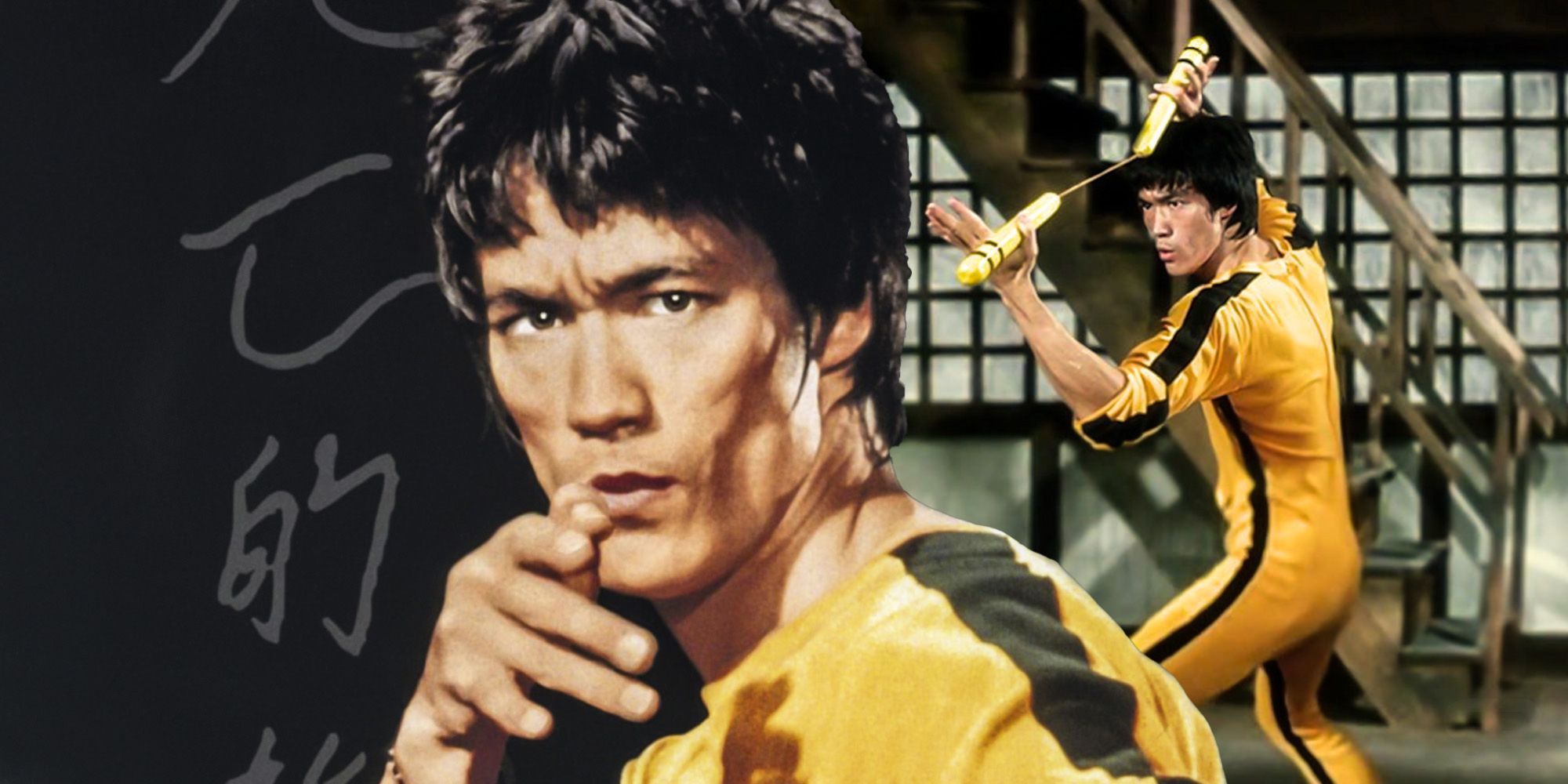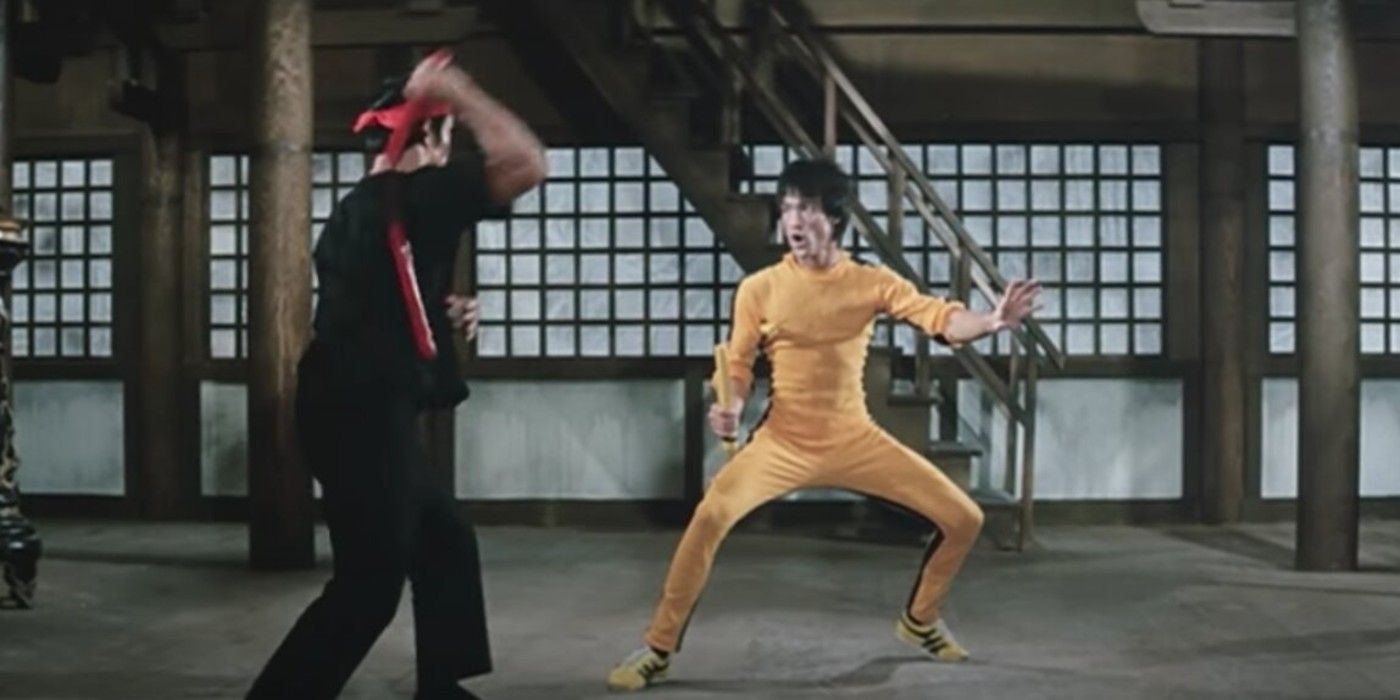If Bruce Lee had managed to finish Game of Death, it would have been his best movie. Lee's untimely death came just weeks ahead of the release of Enter the Dragon in 1973, which would posthumously make him a legend overnight. Today, it remains a one of the most revered martial arts films ever made, but for as much of an impact as it and Lee's prior movies The Big Boss, Fist of Fury, and The Way of the Dragon would have, everything points to Game of Death being remembered as Lee's biggest masterpiece if he'd been able to fully realize it.
For the "completed" version of Game of Death released in 1978, footage of three fight scenes Lee filmed was utilized for the movie's climax, though each were trimmed down heavily from what he finished. The rest of the film was finished with laughable attempts to hide his absence with body doubles, footage from other Bruce Lee movies, a cardboard cutout of his face with a double behind it, and even footage from Lee's Hong Kong funeral. On the other hand, the movie Bruce Lee originally conceived wasn't simply better in technical terms, but a true distillation of his views on martial arts.
The version of Game of Death that Lee had in mind would have seen his character (named Hai Tien in his version and Billy Lo in the 1978 film) ascending a pagoda and encountering an adversary on every floor, each one utilizing a different martial arts discipline. Among the enemies Lee battles are Korean Hapkido exponent Ji Hanjae, a Filipino Kali master played by Dan Inosanto, and future basketball great Kareem Abdul-Jabbar, the latter two being Lee's own students. The ultimate goal was to retrieve an unidentified hidden object at the top of the pagoda, but the real strength of Game of Death would lie in how close it was to Bruce Lee's own heart.
Lee had intended Game of Death as an allegory of the principals of his fighting philosophy of Jeet Kune Do, in which one's approach to combat must be malleable and adaptable to the particular skill set that the opponent brings to the fight. Lee would liken this to the fluidity of water, which is able to take on the form of whatever setting it inhabits due to its formless nature. Aside from the enemies seen in the footage he did finish, Lee would also have faced ten Karate black belts at the base of the pagoda, along with Hwang Ing-Shik as a skilled kicker and Taky Kimura as a master of Praying Mantis kung fu. To make it to the top, Lee would have to adapt his fighting style to the specific strengths of his numerous opponents, just as Lee's own philosophy of martial arts defines as paramount.
Though elements of Game of Death would become iconic, such as Lee's yellow track suit, the version that was released after his passing was only be the barest shadow of his intentions. A much closer representation of his plans can be found in the documentary Bruce Lee: A Warrior's Journey, which presents the finished Lee footage as far as he was able to complete it. Sadly, the world will never truly get to see Bruce Lee's complete vision for the film, but with what is known about it, all evidence points to Game of Death outdoing his entire body of work up to that point and becoming both the greatest and the deepest Bruce Lee movie.


